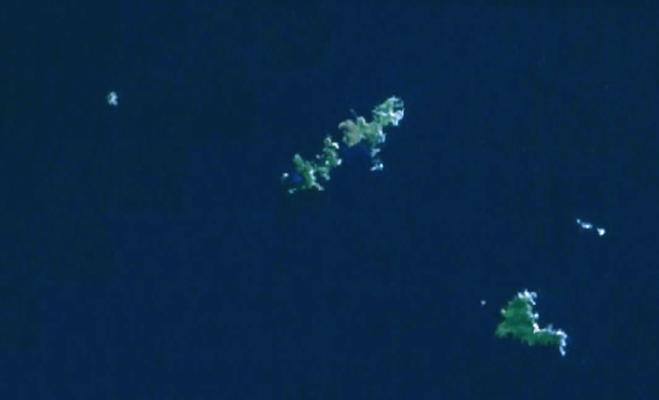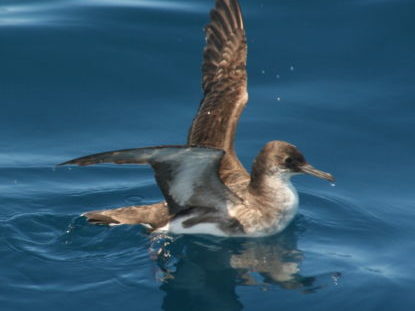Often when predators are eradicated from an island, it’s the first stage in planned reintroduction of native species to the sanctuary, but 26 years ago when the last introduced mammals removed from Burgess Island, the island was simply left, predator-free to recover naturally.

Burgess Island/Pokohinu is the second-largest island in the Mokohinau group, near Great Barrier Island and has open public access. Most of the native vegetation was cleared when its lighthouse on the island was originally built. Goats and kiore were present. The goats were removed from the island by the Wildlife Service in 1973 and in 1990 kiore were removed by DOC – the first planned rodent eradication in the world to use aerial bait application.
In the published article, researchers describe what has happened to the island since then.
“Twenty years after rat eradication, we assessed terrestrial bird diversity on Burgess Island, Mokohinau Group in October 2010, employing 5-minute bird counts between sunrise and 11:00 h at 12 evenly spaced stations on the island. In total, data from 60 counts conducted between 14-17 October 2010 was collated. Mean bird numbers and their standard deviations were calculated for all species seen or heard within a 200 m radius. Sightings of further species made by our team members during other research trips to Burgess Island (2004-2013) are also included. Seabirds were monitored with extensive day-time ground searches for burrows, and capture and banding operations at night-time as part of ongoing seabird ecology projects by the authors and colleagues.”

Red-crowned parakeet, tui and bellbird were the most abundant birds on the island, closely followed by wax-eyes. Twenty-three species were recorded in total during the 5-minute counts.
“Since becoming rat-free, Burgess Island has transformed into a seabird biodiversity hotspot, with the island now known to support seven species of burrowing Procellariiformes: grey-faced petrel (Pterodroma macroptera gouldi), fluttering shearwater (Puffinus gavia), sooty shearwater (Puffinus griseus), little shearwater (Puffinus assimilis), common diving petrel (Pelecanoides urinatrix), and white-faced storm petrel (Pelagodroma marina), all of which were confirmed in our October 2010 research trip. In January 2011, black-winged petrel (Pterodroma nigripennis) was also observed, as well as little penguin (Eudyptula minor), and red-billed gull.”
Further species continue to be observed, both using the island and breeding there.
“Further bird species sighted on Burgess Island during other expeditions were reef heron (Egretta sacra), wandering tattler (Tringa incana; 2005), long-tailed cuckoo (Eudynamys taitensis; 2005), kaka (Nestor meridionalis; 2006), New Zealand pipit (Anthus novaeseelandiae; 2010), rock pigeon (Columba livia; 2010), grey warbler (Gerygone igata; 2010 and 2011), and a white-fronted tern (Sterna striata; 2011). Adding to the species list of procellarids encountered on Burgess Island since 2004, a New Zealand storm petrel (Pealeornis maoriana) was sighted low overhead during a spotlighting operation in 2006, a Buller’s shearwater (Puffinus bulleri) was caught on the ground on the Northern Headland in January 2011 and fairy prion (Pachyptila turtur), and flesh-footed shearwater (Puffinus carneipes) were sighted on the island at least once.”
The lighthouse has also proved to be a beacon for nocturnal seabirds, with collisions between birds and glass being observed.
“ The lighthouse acts as an attractant for nocturnal seabirds, also adding sightings of species which do not breed on Burgess Island, with a live Pycroft’s petrel (Pterodroma pycrofti) found on the ground beside it in a storm in January 2011, a live Cook’s petrel (Pterodroma cookii) sighted by it, and another Cook’s petrel found dead under it in February 2013. Sightings of Buller’s and flesh-footed shearwaters hitting the glass have also been made, but so far without any of these large shearwaters observed killed.”
In the absence of grazing mammals, the island’s plant-life is slowly recovering as well, adding a variety of habitats for returning birds.
“Apart from limited weed control activities and the demolition of the lighthouse keepers’ houses, no habitat restoration of the island has been undertaken to date. Burgess Island thus provides a useful comparison to other islands (for example Tiritiri Matangi), where restoration is being conducted by planting operations and actively introducing native flora and fauna. Areas that were previously mainly grass-covered are gradually being replaced with early successional species of shrub, specifically Muehlenbeckia and harakeke (Phormium tenax), and patches of forest in some areas…”
“…The gradually recovering shrub and forest vegetation, benefitting from the removal of both goats and rats, now offers diverse habitats for many passerines. Flowering and fruiting trees, such as pohutukawa (Metrosideros excelsa), Coprosma spp., and ngaio (Myoporum laetum), but also flax and some of the remaining introduced flowering plants (see e.g. onion weed; Allium triquetrum), offer food for honeyeaters, pollen-feeding birds, and frugivores, and may even provide an additional food source for omnivorous waterbirds such as the red-billed gull.”

